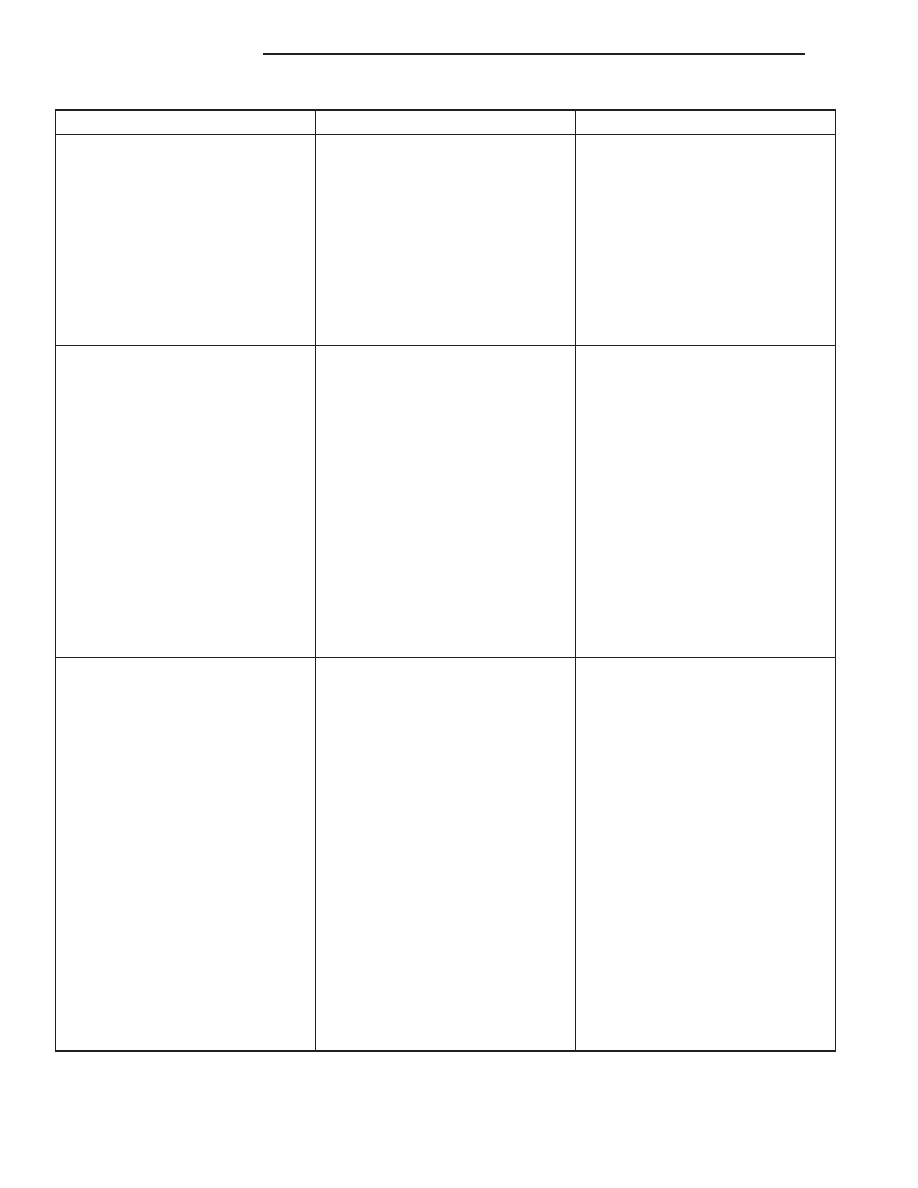Jeep XJ. Manual - part 67

CONDITION
POSSIBLE CAUSES
CORRECTION
ELECTRIC RADIATOR FAN WILL
NOT RUN AT ALL. GAUGE
READING HIGH OR HOT
(2.5L/4.0L MODELS EQUIPPED
WITH A/C AND 4.0L MODELS
EQUIPPED WITH MAX COOLING)
1. Blown Fuse in Power Distribution
Center (PDC)
1. Determine reason for blown fuse
and repair as necessary.
2. Fan relay, powertrain control
module (PCM) or coolant
temperature sensor defective.
2. Refer to Electric Cooling Fan
Diagnosis and Testing. Also refer to
Group 8W, Wiring Diagrams. Repair
as necessary.
3. Fan Motor Defective
3. Refer to Electric Cooling Fan
Diagnosis and Testing. Also refer to
Group 8W, Wiring Diagrams. Repair
as necessary.
NOISY VISCOUS FAN/DRIVE
1. Fan blades loose.
1. Replace fan blade assembly.
Refer to Cooling System Fans in
this Group
2. Fan blades striking a surrounding
object.
2. Locate point of fan blade contact
and repair as necessary.
3. Air obstructions at radiator or air
conditioning condenser.
3. Remove obstructions and/or
clean debris or insects from radiator
or A/C condenser.
4. Thermal viscous fan drive has
defective bearing.
4. Replace fan drive. Bearing is not
serviceable. Refer to Viscous Fan
Drive in this group.
5. A certain amount of fan noise
may be evident on models
equipped with a thermal viscous fan
drive. Some of this noise is normal.
5. Refer to Viscous Fan Drive in this
group for an explanation of normal
fan noise.
INADEQUATE HEATER
PERFORMANCE. THERMOSTAT
FAILED IN OPEN POSITION
1. Has a Diagnostic trouble Code
(DTC) been set?
1. Refer to Group 25, Emissions for
correct procedures and replace
thermostat if necessary
2. Coolant level low
2. Refer to Cooling System-Testing
For Leaks in this group.
3. Obstructions in heater hose/
fittings
3. Remove heater hoses at both
ends and check for obstructions
4. Heater hose kinked
4. Locate kinked area and repair as
necessary
5. Water pump is not pumping
water to/through the heater core.
When the engine is fully warmed
up, both heater hoses should be
hot to the touch. If only one of the
hoses is hot, the water pump may
not be operating correctly or the
heater core may be plugged.
Accessory drive belt may be
slipping causing poor water pump
operation.
5. Refer to Water Pump in this
group. If a slipping belt is detected,
refer to Accessory Drive Belts in this
group. If heater core obstruction is
detected, refer to Group 24, Heating
and Air Conditioning.
7 - 16
COOLING SYSTEM
XJ
DIAGNOSIS AND TESTING (Continued)